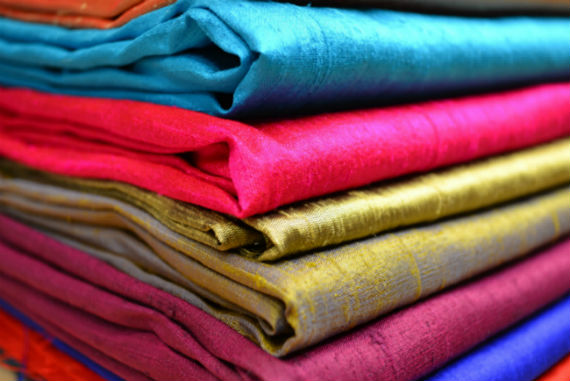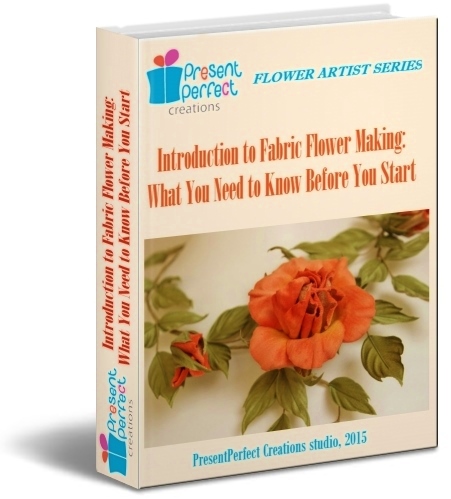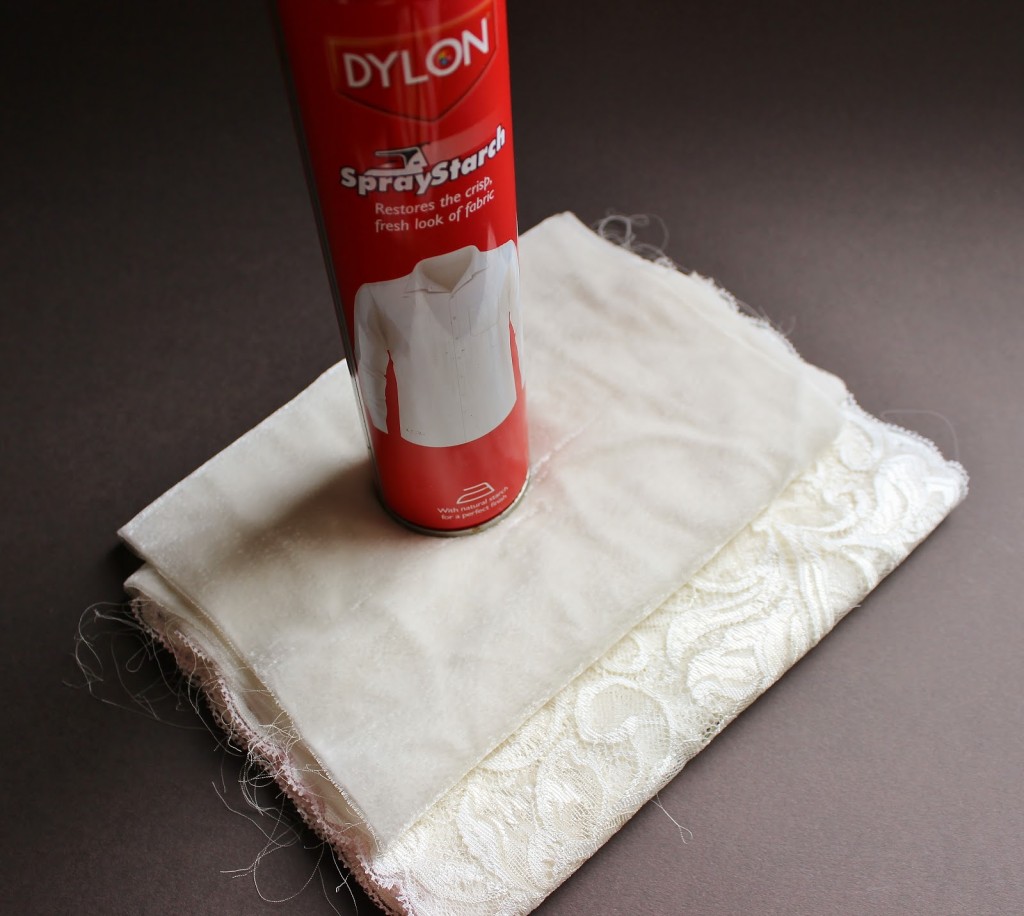Choosing and using fabric stiffeners
Some of you know that I have recently worked on an e-book about fabric flowers and what one should know before they start making their own fabric flowers. The book has been released very is available for purchase here. You will find a lot of useful information re making fabric flowers that you did not know before.
Meanwhile I would like to share a chapter from the book with you today. This chapter talks about different ways of stiffening fabric before cutting out parts of flowers from it. I have included a number of recipes to try and test.
It might so happen that for different types of fabric you would have to use different stiffeners as they are made from different ingredients and thus work better or worse depending on a chosen fabric. For example, gelatine is not a good choice for lace as it covers the delicate fabric with a film filling all the little holes and gaps between the threads. I would recommend to try a spray starch for lace fabrics. Anyway, finding the best possible stiffener takes time and experimentation, so I wish you lots of patience and fun!
Here is the extract from my e-book. Please feel free to ask your questions in the comments below.
Recipes of stiffening solutions to try
All the fabrics must be stiffened before being cut out. This prevents fraying of the edges and allows you to shape the leaves and petals with the flower iron. It also helps the completed flower keep its shape. There are several different sizing options available. Each of them involves different ingredients giving you a choice of options to try and test.
- One of the most popular options is gelatine sizing. Use powdered gelatine from a reliable manufacturer that you can obtain from your local supermarket. For 200 ml of cold water take 2 level teaspoons of granulated gelatine and place it in a heat resistant glass bowl. Pour the water over it stir and leave to soak for about 1 hour . Generally the concentration depends on the thickness of the fabrics used – the thicker the fabric the less gelatine is needed. This concentration will do for medium-weight fabrics such as satins, crepes, habotai fabrics etc. For organza and chiffon you might want to use a bit more gelatine. Heat the soaked gelatine over a pot of gently boiling water (bain Marie).Constantly stir until all the granules dissolve and take the solution off the heat before it starts boiling. Then dip a piece of fabric into the solution (please be careful and watch your fingers as it will be boiling hot!), take it out and let it drain for a few moments. Then peg in onto a clothes line to dry completely.
- The oldest stiffening solutions used starch, which you can still use today. Here is a recipe to try. Mix: a tablespoon of cornflour (or cornstarch which is the same) and mix it well with a tablespoon of water. Pour this mixture into 200 ml of boiling water; continue heating and stirring until the mixture has thickened and no lumps appear. Take off the heat and stir in a tablespoon of good quality PVA glue like Sobo. You can apply the stiffening solution by placing a piece of fabric on a flat smooth surface like glass or plastic and using a sponge or a wide flat brush to spread the mixture evenly on the surface of the fabric. If the fabric has a right and a wrong side to it apply the solution onto the wrong side. Then peg in onto a clothes line to dry completely.
- I successfully use spray starch (the one that is used for starching shirt collars) for stiffening such delicate fabrics like velvet and lace. Just spray the wrong side of your chosen fabric until it is well saturated and let it dry completely on a flat surface before using it.
- Another option is to use wallpaper paste as sizing. Following the manufacturers instructions mix some wallpaper paste with water. Apply to a flat piece of fabric with a brush or a sponge and then hang it up to dry.
- White PVA glue can also be used for stiffening fabrics. Here is one of the recipes: Mix 200 ml of warm water with 2 tablespoons of good quality thick PVA glue, stir well and then add a tablespoon of vodka or spirit and give a final stir. To stiffen a piece of fabric dip it into the prepared solution, let it drip and then hand up to
There are other recipes for stiffening solutions one can prepare. There are also proprietary stiffeners that you can get from craft shops or online.
- One of them which is readily available and can be bought on Amazon and elsewhere online is Stiffy. It is a water based stiffener which means you can experiment with the strength of the solution. I would recommend to start by mixing 1 part of Stiffy with 5 parts of water. Depending on the thickness of your chosen fabric you can vary the proportions and find the perfect solution which works for you.
To save yourself time and effort you can use industrially stiffened fabrics for making flowers. But even if you do so for most of your designs there will be times when you will need to stiffen unusual fabrics for some of your projects like denim, wild silk, linen etc. This is why I recommend to try a couple of solutions mentioned above and choose one that is easy to use, made of readily available ingredients and has shown the best results to utilise in future.






